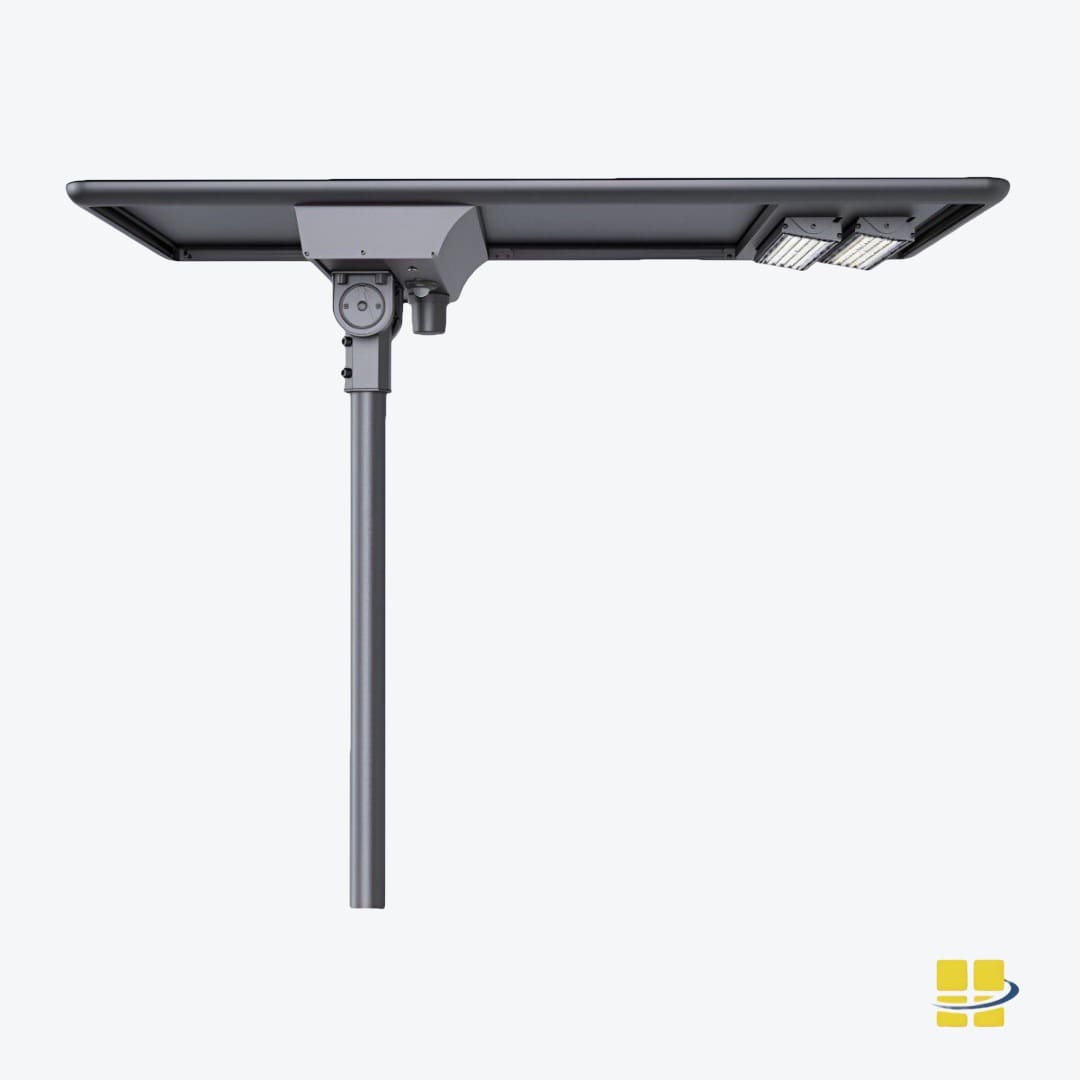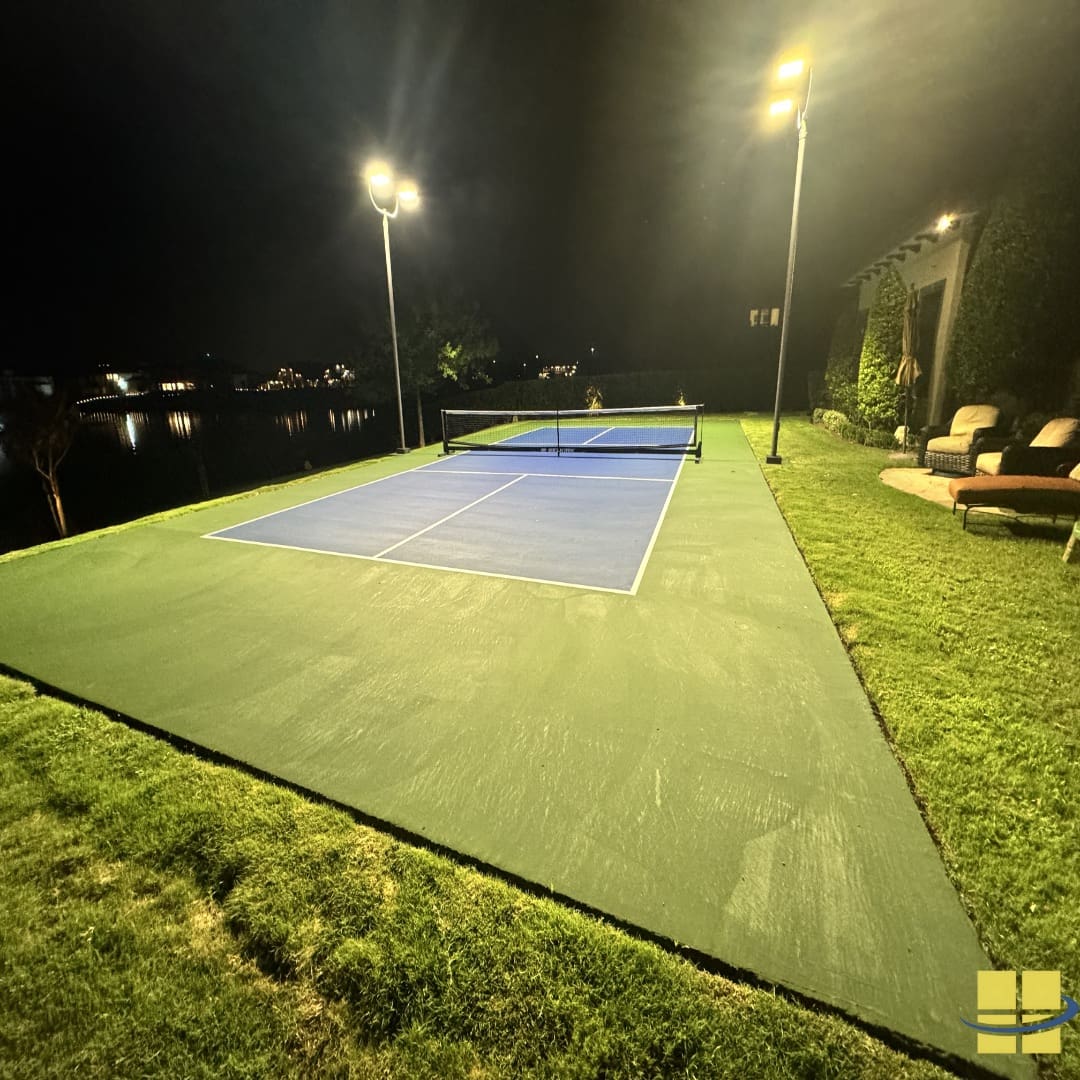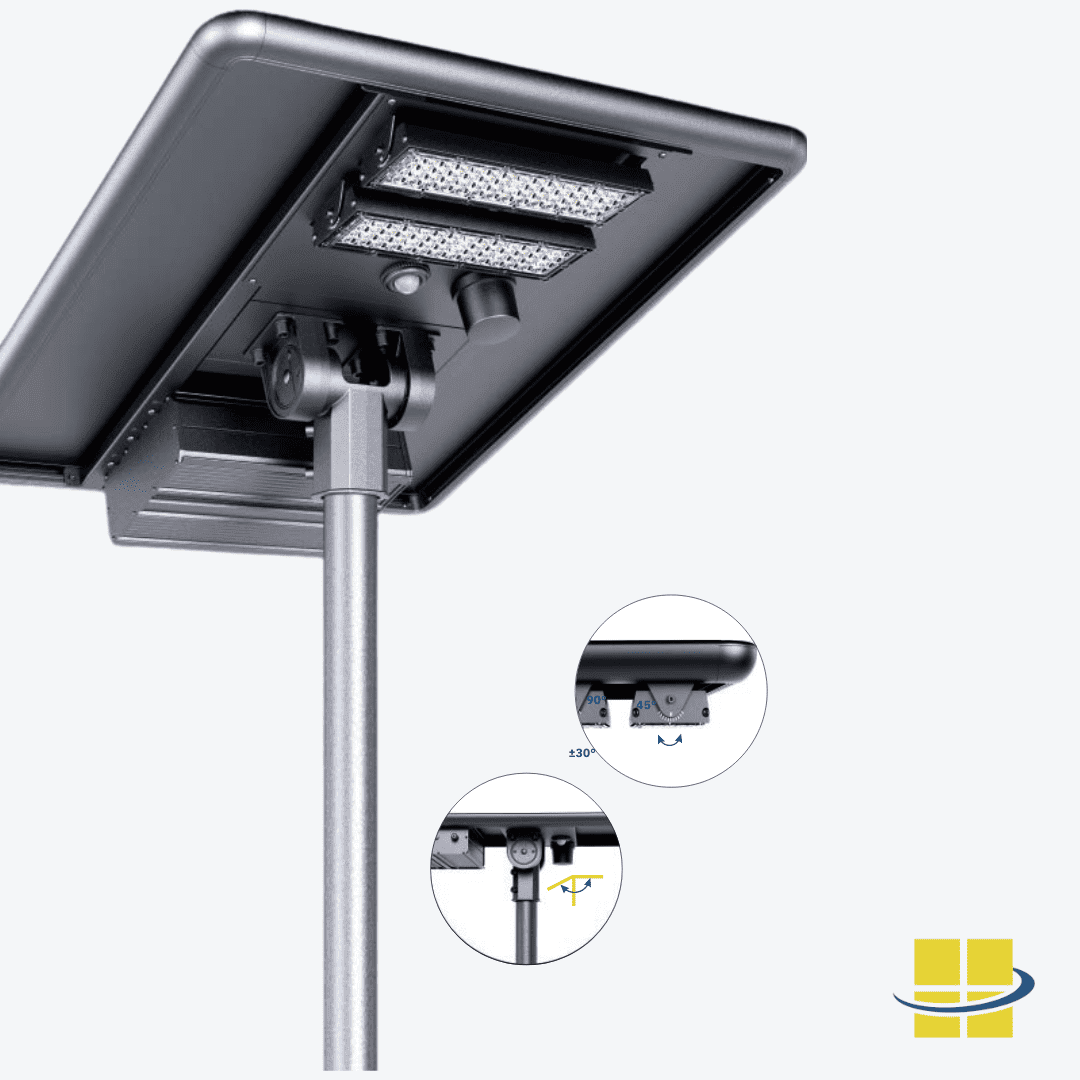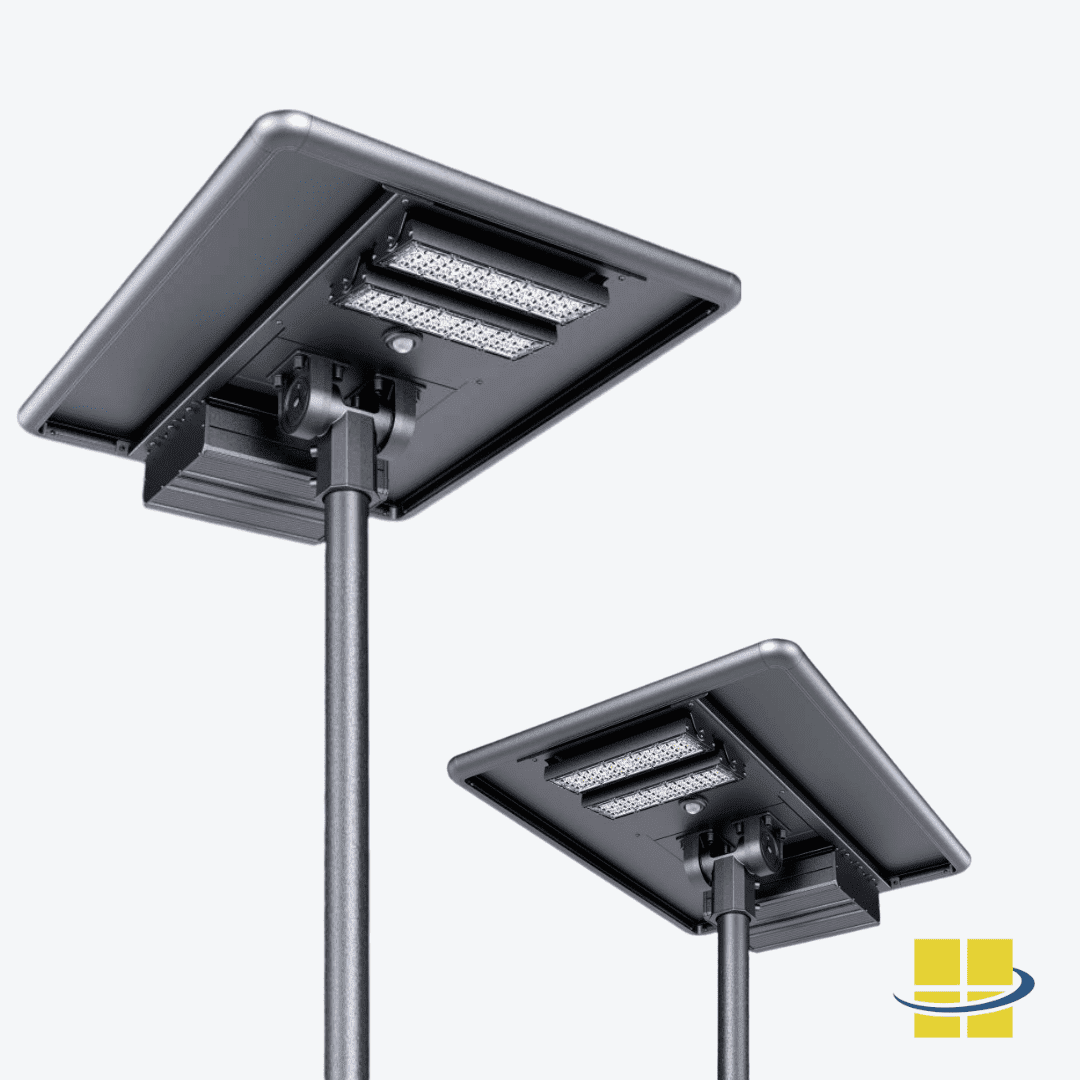Pickleball has surged in popularity, creating a demand for well-lit courts to extend playing hours. This demand is particularly significant in commercial or public installations, where multiple players share the environment. However, traditional lighting can contribute to light pollution, affecting the environment and nearby communities. Dark Sky compliant solar lighting offers an eco-friendly solution that minimizes light pollution while providing excellent illumination for pickleball courts. This article explores pickleball court lighting design, the benefits, installation, and maintenance of Dark Sky compliant solar lighting for pickleball courts, offering a comprehensive guide for enthusiasts and facility managers.
Key Takeaways
-
-
Environmental and Health Benefits: Dark Sky compliant solar lights minimize light pollution, protect nocturnal wildlife, support astronomical research, and enhance human health by reducing excessive artificial light at night.
-
Energy Efficiency and Cost Savings: These lights utilize renewable solar energy and efficient LED technology, significantly reducing energy consumption and maintenance costs. They offer a sustainable, off-grid solution that eliminates electricity bills and installation costs related to trenching and cabling.
-
Enhanced Visibility and Safety: Properly directed lighting with full cutoff fixtures and lower color temperatures (3000K or less) ensures optimal visibility on the pickleball court, improving player safety and game enjoyment while complying with Dark Sky standards.
-
Understanding Dark Sky Compliance
Definition and Importance
Dark Sky compliance refers to outdoor lighting designed to minimize light pollution. This compliance is crucial for preserving the night sky, protecting wildlife, and maintaining human health. Light pollution disrupts ecosystems, affects astronomical observations, and can cause various health issues.
Regulations and Standards
The International Dark-Sky Association (IDA) sets guidelines for Dark Sky compliance, including proper shielding, color temperature, and light intensity. These standards ensure that lighting is directed downward and is less intrusive to the surrounding environment.
Benefits of Dark Sky Compliant Lighting
Environmental Impact
Dark Sky compliant lighting significantly reduces light pollution, helping to preserve the natural night environment. It protects nocturnal wildlife and supports astronomical research by maintaining dark skies.
Energy Efficiency
These lighting solutions are designed to be energy-efficient, often using LED technology, which consumes less power and lasts longer than traditional lighting options. LED lighting not only offers superior energy efficiency but also boasts longevity and durability, making it an ideal choice for both indoor and outdoor pickleball courts.
Health Benefits
Reducing excessive artificial light at night can improve human health by, regulating circadian rhythms, thus enhancing sleep quality and overall well-being.
Benefits of Dark Sky Compliant Lighting for Pickleball Courts
Enhanced Visibility and Safety: Properly directed lighting improves visibility on the pickleball court, making the game safer and more enjoyable for players.
Reduced Light Pollution: By focusing light where it’s needed and minimizing spillover, dark sky compliant light fixtures help preserve the natural beauty of the night sky.
Environmental Protection: Lower color temperatures and reduced light pollution benefit local wildlife, which can be negatively affected by artificial lighting.
Energy Efficiency: Dark sky compliant lighting often uses LED technology, which is more energy-efficient and has a longer lifespan than traditional lighting solutions. This not only saves on energy costs but also reduces the environmental footprint. LED pickleball court lighting can lead to energy savings of 50-75% compared to traditional lighting options, offering long-term savings through lower energy consumption and longer lifespans of LED fixtures.
Key Features of Dark Sky Compliant Pickleball Court Lighting
To ensure that pickleball court lights meet dark sky compliance standards, they must adhere to specific guidelines:
- Fixtures Must Be Mounted at 90 Degrees Mounting fixtures at a 90-degree angle ensures that the light is directed downwards, focusing illumination where it’s needed—on the court. This reduces the amount of light spilling into surrounding areas and the sky, preventing unnecessary light pollution. Direct lighting is crucial for optimal visibility on the court, as it provides bright, uniform illumination directly onto the playing surface.
- Color Temperature of 3000K or Less The color temperature of lighting is measured in Kelvin (K). Dark sky compliant lighting requires a color temperature of 3000K or less. Lights with a lower Kelvin rating emit a warmer, more amber glow, less disruptive to nocturnal wildlife and better for preserving the natural night environment than the harsh, blue-white light of higher Kelvin ratings.
- Full Cutoff Fixtures Full cutoff light fixtures are designed to prevent any light from escaping above the horizontal plane of the fixture. This design further ensures that light is concentrated downward, reducing glare and light trespass while enhancing visibility on the court.
Solar Lighting
Solar lighting is an innovative and eco-friendly solution that utilizes the power of the sun to provide illumination. These systems are increasingly popular due to their sustainability, cost savings, and ability to function independently of the traditional power grid.
How Solar Lighting Works
Solar lighting systems operate through a series of interconnected components:
- Photovoltaic (PV) Panels: These panels capture sunlight during the day and convert it into electrical energy through the photovoltaic effect.
- Charge Controller: This device regulates the energy flow from the PV panels to the batteries, preventing overcharging and ensuring optimal battery life.
- Batteries: Energy is stored in batteries for use during nighttime or cloudy days.
- LED Lights: The stored energy powers LED lights, which are known for their energy efficiency and long lifespan.
- Control Systems: Advanced solar lighting systems often include sensors and timers to optimize light usage and energy consumption. The lighting system operates efficiently using scheduling, photocells, and motion sensors to ensure it only functions when needed, thereby optimizing energy use and extending the lifespan of the lighting fixtures.
Advantages of Solar Lighting
- Eco-Friendly: Solar lighting reduces carbon footprints by utilizing renewable energy.
- Cost-Effective: While the initial investment may be higher, the long-term savings on electricity bills and minimal maintenance costs make it economically viable.
- Minimal Maintenance: With fewer moving parts and no need for a power grid connection, solar lighting systems require less frequent maintenance.
- Off-Grid Capabilities: Ideal for remote locations, solar lights can operate independently, making them perfect for areas without access to traditional power sources.
- No Trenching Required: Installation is simplified as there is no need for trenching to lay electrical cables, significantly reducing labor costs and disruption.
- No Electrician or Inspection Fees: Solar lighting systems can often be installed without the need for a licensed electrician or municipal inspection, further lowering costs.
- Tax Incentives and Rebates: Many regions offer tax incentives and rebates for installing solar lighting, enhancing the financial benefits.
Types of Solar Lighting
- Solar Street Lights: Designed for urban and rural areas, these lights provide ample illumination for roadways and public spaces.
- Solar Garden Lights: Typically used for aesthetic and functional purposes in residential gardens, pathways, and parks.
- Solar Floodlights: High-intensity lights used for security and outdoor recreational areas, providing broad coverage and bright illumination.
Combining Solar and Dark Sky Compliance
Integration and Synergies
Integrating solar lighting with Dark Sky compliance enhances both environmental and operational benefits. Dark Sky compliant lights are designed to minimize light pollution by directing light downward and reducing glare. When combined with solar technology, these lights offer:
- Minimal Light Pollution: Ensuring that light is only directed where needed, preserving the natural night sky.
- Energy Efficiency: Utilizing renewable energy sources to power efficient lighting systems.
- Enhanced Sustainability: Reducing both carbon emissions and light pollution, benefiting the environment and human health.
Lighting Requirements for Pickleball Courts
Standards and Measurements
Proper lighting is crucial for pickleball courts to ensure safe and enjoyable play, with specific lighting illumination levels being essential for proper visibility. Key requirements include:
- Illumination Levels: Pickleball lighting standards require illumination to be supplied by luminaires mounted on twenty-foot high poles that deliver an average of 30 footcandles (fc). This light level is necessary for players to see the ball clearly, even at high speeds and arcs.
- Max/Min Ratio: The lighting system must achieve a max/min ratio of 2.0 or less. This ratio, which measures the evenness of light distribution, ensures that no areas are too bright or too dark, enhancing overall visibility and preventing visual discomfort.
- Glare Minimization: Reducing glare to prevent visual discomfort and distraction.
Mounting Heights
Mounting the luminaires on twenty-foot poles allows pickleball players to track the ball even when it goes into a high arc. Using a shorter pole(s) can cause the ball to disappear when it goes above the lights and reappear unexpectedly as it returns to the court.
Player Safety
Well-designed lighting systems enhance player safety by:
- Preventing Accidents: Clear visibility of the ball, court boundaries, and other players reduces the risk of collisions and mishaps.
- Improving Play Experience: Good lighting ensures that players can fully enjoy the game, with optimal visibility contributing to better performance and enjoyment.
Choosing the Right Solar Pickleball Court Lights
Types of Solar Lights for Pickleball Courts
Selecting the right solar lights involves understanding the specific needs of a pickleball court. Pickleball light poles are essential for optimal outdoor lighting, providing elevated positions for commercial-grade fixtures and proper optics to ensure the best illumination. Common choices include:
Area Lights: Designed to illuminate wider spaces with a softer light, ensuring even coverage across the court. These lights can be easily installed in any location with direct sunlight, eliminating the need for electricity.
Key Features to Consider
When choosing solar lights, consider the following factors:
- Brightness (Lumens): Adequate brightness is crucial for visibility. Our solar lights achieve an impressive 195 lumens per watt, maximizing energy utilization for optimal brightness while minimizing power consumption.
- Battery Life: Long battery life ensures the lights can operate throughout the night, even after cloudy days. High-capacity batteries support extended operation.
- Weather Resistance: Solar lights must be durable and weather-resistant to withstand outdoor conditions. Our lights are IP66 and IK08 rated for durability, ensuring reliable performance in harsh weather conditions like heavy rain, snow, or storms.
- Ease of Installation: Choose lights that are easy to install and require minimal maintenance. Our all-in-one design integrates all necessary components, simplifying installation and operation for hassle-free off-grid lighting.
Designing a Solar Lighting System
Layout Planning
Effective layout planning ensures the entire court is evenly lit without dark spots or excessive glare. Key considerations include:
- Placement of Light Poles: Position poles around the perimeter to provide uniform lighting.
- Direction of Light Beams: Aim beams to cover the court evenly and avoid shadows.
Light Placement
Strategically placing lights around the court’s perimeter and at key locations ensures uniform lighting coverage. Adhering to lighting design guidelines optimizes performance and enhances visibility.
Technical Considerations
Key technical aspects include:
- Solar Panel Orientation: Ensure panels are oriented to capture maximum sunlight.
- Battery Capacity: Choose batteries with sufficient capacity to store energy for continuous operation.
- Light Fixture Specifications: Select fixtures that meet the required brightness, distribution, and efficiency standards. LED lights are more energy-efficient and have a longer lifespan compared to traditional metal halide lights, making them a more economical and practical choice for pickleball court lighting.
Solar Area Lights for Pickleball Courts
The SUNA solar area lights feature high-capacity batteries and extremely efficient LEDs, constructed with premium corrosion-resistant aluminum alloy and 316 stainless steel components. An ultra-strong slip fitter ensures durability, and the lights are IP66 and IK08-rated for water and dust resistance.
Features:
- High Efficiency: Achieving an impressive 195 lumens per watt, maximizing energy utilization for optimal brightness while minimizing power consumption.
- All-in-One Design: Simplifies installation and operation for hassle-free off-grid lighting.
- Cost-Efficient Operation: Harnessing solar power eliminates electricity bills, resulting in significant long-term savings and reduced maintenance.
- Enhanced Safety: Mitigates the risk of accidents related to power outages, providing a safer environment for players.
- Environmentally Friendly: Utilizing solar energy ensures a clean and sustainable power source, reducing carbon emissions.
- Flexible Installation: Can be installed virtually anywhere, illuminating even the most remote locations.
- Robust Protection: Built to withstand harsh environments, IP66-rated for water and dust resistance.
Programming Options:
- MPPT Controller: Adjusts the electrical flow from the panels to get the most power possible, optimizing panel performance.
- PWM Controller: Controls brightness by rapidly turning the lights on and off, adjusting the on-off cycle to control brightness levels.
Easy Installation and Maintenance:
Eliminates the necessity for trenching or cabling work, streamlining the installation process and reducing associated labor and material costs. Providing off-grid lighting eliminates the need for reliance on the electrical grid and ensures freedom from electric bills.
Dark Sky Compliant
The SUNA is mounted or installed directly onto an LED light pole with an adjustable spigot 0°-90°.
The Kelvin options include 2200K and 3000K. Indirect lighting and reflected light can enhance visual comfort and reduce glare by directing light upwards, producing a soft, diffused effect that minimizes harsh shadows. Your pickleball court will meet dark sky regulations once equipped with Can be equipped with 2200K or 3000K LEDs.
Full Cutoff fixture with LED modules that are mounted in the fixture housing that are adjustable °0-30°.
Additional Pickleball Court LED Lighting Resources
Conclusion
Dark Sky compliant solar lighting is a sustainable and efficient solution for illuminating pickleball courts. It provides excellent lighting while minimizing environmental impact and operational costs. By understanding the benefits, installation process, and maintenance requirements, facility managers and community planners can make informed decisions to enhance their sports facilities. Adopting eco-friendly lighting not only supports sustainability goals but also improves the overall playing experience for enthusiasts.
Dark Sky Compliant Solar Pickleball Court Lighting Frequently Asked Questions (FAQs)
You have Pickleball Court Lighting questions. We have answers. If you have a question that isn’t answered below, contact an Access Fixtures lighting specialist at (800) 468-9925 or click here to visit our customer service page.
What is Dark Sky compliance and why is it important?
Dark Sky compliance refers to outdoor lighting designed to minimize light pollution. It preserves the night sky, protects wildlife, and maintains human health by reducing disruptions to ecosystems, astronomical observations, and circadian rhythms.
What are the benefits of using Dark Sky compliant lighting for pickleball courts?
Dark Sky compliant lighting enhances visibility and safety on the court, reduces light pollution, protects the environment, and is energy-efficient, often using long-lasting LED technology.
What are the key features of Dark Sky compliant pickleball court lighting?
Key features include fixtures mounted at 90 degrees to direct light downward, a color temperature of 3000K or less to reduce disruption to wildlife, and full cutoff fixtures to prevent light from escaping above the horizontal plane.
How does solar lighting work?
Solar lighting systems capture sunlight through photovoltaic panels, store the energy in batteries, and use it to power LED lights. Control systems optimize light usage and energy consumption.
What are the advantages of solar lighting for pickleball courts?
Solar lighting is eco-friendly, cost-effective, and requires minimal maintenance. It operates independently of the power grid, eliminates the need for trenching, and may qualify for tax incentives and rebates.
What types of solar lights are suitable for pickleball courts?
Suitable types include floodlights for broad, intense illumination and area lights for softer, even coverage across the court.
What features should I consider when choosing solar lights for pickleball courts?
Consider brightness (lumens), battery life, weather resistance, and ease of installation. High-quality solar lights are durable and easy to install.
What are the technical considerations for designing a solar lighting system for pickleball courts?
Ensure solar panels are oriented to capture maximum sunlight, choose batteries with sufficient capacity, and select light fixtures that meet brightness and efficiency standards.
How does combining solar lighting with Dark Sky compliance benefit pickleball courts?
Combining solar lighting with Dark Sky compliance minimizes light pollution, enhances energy efficiency, and promotes sustainability by reducing carbon emissions and protecting the environment.
What are the installation and maintenance benefits of solar area lights for pickleball courts?
Solar area lights are easy to install with no need for trenching or cabling, reducing labor costs. They operate off-grid, eliminating electric bills, and are built to withstand harsh environments, ensuring reliable operation.





